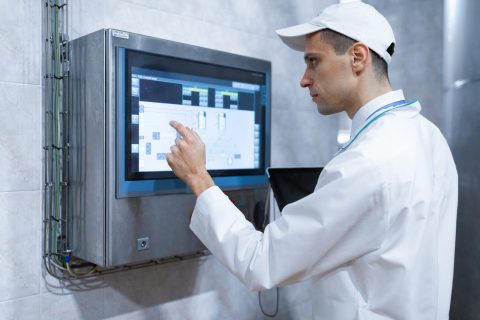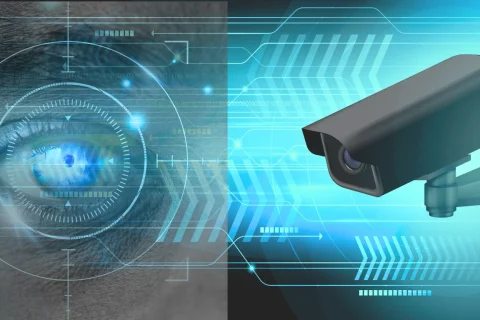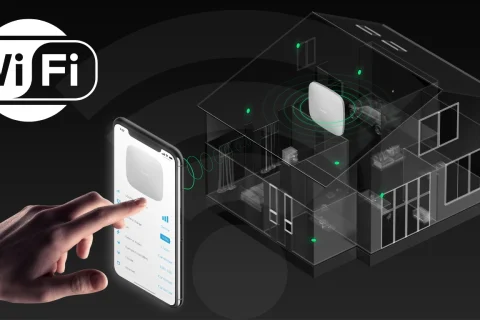Introduction: What You Will Learn About ELV Systems
Welcome to your comprehensive guide to ELV systems (Extra Low Voltage systems). In today’s fast-paced world where efficiency and security are paramount, understanding these electronic systems is crucial for anyone involved in modern infrastructure development. This guide will cover the definition of ELV systems, their essential components, and how they significantly enhance security and operational efficiency in various settings. By the end of this blog, you will have a thorough understanding of ELV systems and be equipped to make informed decisions regarding their implementation in your projects.
What are ELV Systems? Unlocking the Basics
Extra Low Voltage (ELV) systems are electrical systems that operate at low voltage levels, typically under 50 volts. Unlike traditional electrical systems, which involve higher voltage power supplies for lighting and heavy appliances, ELV systems cover a wide range of applications, including telecommunications, security systems, and building automation. The vital aspect of ELV systems is that they mitigate the risk of electric shock, making them safer for installation and operation, especially in public buildings.
Understanding the fundamentals of ELV systems is essential to grasp their significance in modern infrastructure. ELV systems integration allows for various low voltage functions to coexist without interference, providing a streamlined approach to building management. This reduces energy consumption and lowers operational costs, while also enhancing safety protocols for the occupants.
Key Components of ELV Systems: A Comprehensive Breakdown
ELV systems comprise multiple essential components that work together harmoniously to ensure functionality and safety:
- Cabling and Wiring: The backbone of any ELV system. The correct installation of cabling is vital, as it affects the performance and safety of the entire system. High-quality wiring ensures that signals transmit efficiently, maintaining system integrity and preventing faults.
- Control Systems: Control panels are crucial as they manage various low voltage subsystems including alarms, environmental controls, and lighting. Automation through control systems allows for remote management and monitoring, promoting both efficiency and usability within a building.
- Sensors and Cameras: Surveillance and security are paramount in modern infrastructure. Integrating advanced sensors and high-definition cameras into ELV systems allows for continuous monitoring and real-time alerts on security breaches, ensuring protection from theft and vandalism.
Enhancing Security with ELV Systems: Safety First
One of the most significant benefits provided by ELV systems is the enhancement of security. Through the implementation of advanced security systems such as integrated cameras, motion detectors, and access control mechanisms and buildings can achieve a new level of safety.
For instance, statistics indicate that installations of modern surveillance systems have led to a 50% reduction in unauthorized access incidents across various corporate facilities. Case studies from cities employing holistic ELV solutions reveal a dramatic decrease in vandalism and property damage, underscoring the effectiveness of these systems in creating safer environments.
Building Automation: The Future of Efficient Infrastructures
As technology progresses, building automation emerges as a cornerstone of efficient infrastructures. ELV systems play a significant role in the automation of essential building operations, including lighting, climate control (HVAC systems), and fire alarms. The synergy of these electronic systems not only streamlines operations but also results in substantial energy savings.
For example, smart lighting solutions controlled through an ELV system can adjust automatically based on occupancy, leading to as much as 30% reduction in energy consumption over time. Numerous case studies highlight successful implementations in large-scale infrastructures, demonstrating the remarkable impact of automation on operational costs and resource management.
Challenges and Considerations in Implementing ELV Systems
While integrating ELV systems offers numerous advantages, there are inherent challenges that must be considered during the implementation phase. Issues such as system compatibility with existing infrastructures, installation expenses, and ongoing maintenance can present significant hurdles.
To mitigate these challenges, project managers should conduct thorough feasibility assessments before beginning installation. Collaborating with experienced contractors and developers can ensure effective integration, while scheduled maintenance can help sustain system performance and longevity.
Conclusion: Share Your Thoughts
In summary, understanding ELV systems is crucial for anyone involved in modern infrastructure management. From their basic components to their application in enhancing security and efficiency, ELV systems provide vital solutions that improve overall building management. We encourage you to share your experiences or thoughts regarding the implementation of ELV systems in your projects.
Frequently Asked Questions
What are ELV systems?
ELV systems, or Extra Low Voltage systems, are electrical systems operating at low voltage levels, typically under 50 volts, and are used for applications like telecommunications, security, and building automation.
Why are ELV systems important in modern infrastructure?
ELV systems enhance operational efficiency and security, mitigate the risk of electric shock, and allow multiple low voltage functions to coexist without interference, making buildings safer and more efficient.
What are the key components of ELV systems?
The key components of ELV systems include cabling and wiring, control systems, and sensors and cameras, all of which work together to enhance functionality and safety.
How do ELV systems enhance building security?
ELV systems enhance security through integrated surveillance systems, motion detectors, and access control mechanisms, leading to a significant reduction in unauthorized access and vandalism.
What role does building automation play in ELV systems?
Building automation within ELV systems streamlines operations such as lighting and climate control, leading to significant energy savings and more efficient infrastructure management.
What challenges might one face when implementing ELV systems?
Challenges include ensuring system compatibility with existing infrastructures, high installation costs, and the need for ongoing maintenance.
How can one mitigate challenges when implementing ELV systems?
Challenges can be mitigated through thorough feasibility assessments, collaborating with experienced contractors, and establishing scheduled maintenance plans.
Can ELV systems contribute to energy savings?
Yes, ELV systems can lead to substantial energy savings, as seen in smart lighting solutions that adjust automatically based on occupancy, resulting in up to 30% reduction in energy consumption.
What types of buildings can benefit from ELV systems?
Various types of buildings, including corporate facilities, public buildings, and residential complexes, can benefit from the enhanced safety, efficiency, and automation provided by ELV systems.
How can I start implementing ELV systems in my projects?
To start implementing ELV systems, you should conduct a feasibility assessment, consult with experienced contractors, and consider the specific requirements and infrastructure of your project.









